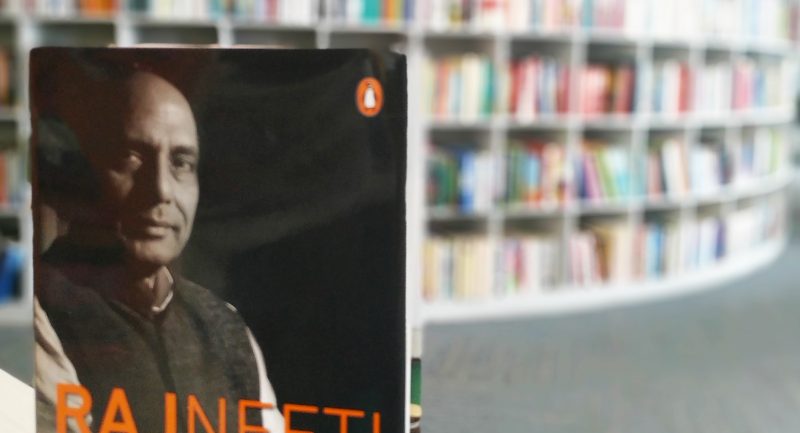Rabindranath Tagore was born in 1861. He was the fourteenth child of Debendranath Tagore, head of the Brahmo Samaj. Their family house at Jorasanko was a hive of cultural and intellectual activity and Tagore started writing at an early age. He was a prolific writer; his works include poems, novels, plays, short stories, essays and songs. Late in his life Tagore also took up painting, exhibiting in Moscow, Berlin, Paris, London and New York. He died in 1941.
Born in Dehradun in 1958, and educated in Delhi and Calcutta, Ramachandra Guha pursued an academic career for ten years before becoming a full-time writer. He was named one of the hundred most influential intellectuals in the world by Foreign Policy and Prospect magazines.
Here’s an excerpt from the introduction of Tagore’s Nationalism written by Ram Guha.
‘Why Tagore?’ asked a brilliant young mathematician of me recently. He was referring to a newspaper column where I had spoken of Rabindranath Tagore, Mahatma Gandhi,
Jawaharlal Nehru and B.R. Ambedkar as the ‘four founders’ of modern India. ‘I can see why you singled out the other three,’ said the mathematician. ‘Gandhi led the freedom movement, Nehru nurtured the infant Indian state, Ambedkar helped write its Constitution and gave dignity to the oppressed.
But why Tagore?’ My questioner was no ordinary Indian. He comes from a family of distinguished scholars and social reformers. Like his father and grandfather before him, he had been educated at a great Western university but came back to work in India. Like them, he is well read and widely travelled, and yet deeply attached to his homeland. He fluently speaks three Indian languages. If an Indian of his sensibility had to be convinced of Tagore’s greatness (or relevance), what then of all the others?
Tagore’s reputation, within India and outside it, has suffered from his being made a parochial possession of one province, Bengal. It was in Bengali that he wrote his poems, novels, plays and songs, works that are widely read and regularly performed seven decades after his death. The poet Subhas Mukhopadhyay recalls ‘a time when the elite of Bengal fought among themselves to monopolise Tagore. They tried to seal off Tagore, cordoning him away from the [sic] hoipolloi.’ Then he adds: ‘There was another trend, serving the same purpose, but in a different way. In the name of ideology and as the sole representative of the masses, some tried to protect the proletariat from the bourgeois poet’s harmful influence!
The Bengali communists have since taken back their hostility to Tagore—now, they quote his verses and sing his lyrics with as much gusto as their (bourgeois) compatriots.
But he remains the property of his native heath alone. This geographical diminution of the man and his reputation has been commented upon by that other great world traveller and world citizen of Bengali extraction, the sitar player Ravi Shankar. In his autobiography, the musician writes that ‘being Bengali, of course, makes it natural for me to feel so moved by Tagore; but I do feel that if he had been born in the West he would now be [as] revered as Shakespeare and Goethe . . .
He is not as popular or well-known worldwide as he should be. The Vishwa Bharati are guarding everything he did too jealously, and not doing enough to let the entire world know of his greatness.’
Ravi Shankar compared Tagore to the German genius Johann Wolfgang von Goethe (1749 1832); so, before him, had the critic Buddhadeva Bose. Both men, remarked Bose, ‘participate[d] in almost everything’.Certainly, no one since Goethe worked in so many different fields and did original things in so many of them. Tagore was a poet, a novelist, a playwright, a lyricist, a composer and an artist. He had good days and bad, but at his best he was outstanding in each of these fields.
Tagore’s poems and stories are mostly set in Bengal. However, in his non-fiction, that is to say in his letters, essays, talks and polemics, he wrote extensively on the relations between the different cultures and countries of the world. Tagore, notes Humayun Kabir, ‘was the first great Indian in recent times who went out on a cultural mission for restoring contacts and establishing friendships with peoples of other countries without any immediate or specific educational, economic, political or religious aim. It is also remarkable that his cultural journeys were not confined to the western world’. He visited Europe and North America, but also Japan, China, Iran, Latin America and Indo-China.
Read the complete introduction by Ramachandra Guha in the new edition of Rabindranath Tagore’s Nationalism. Get your copy here.









